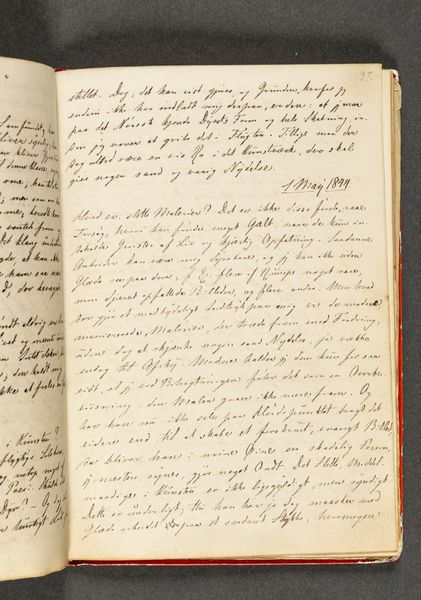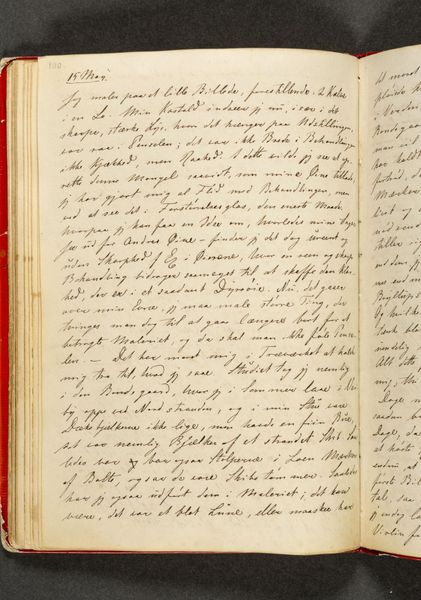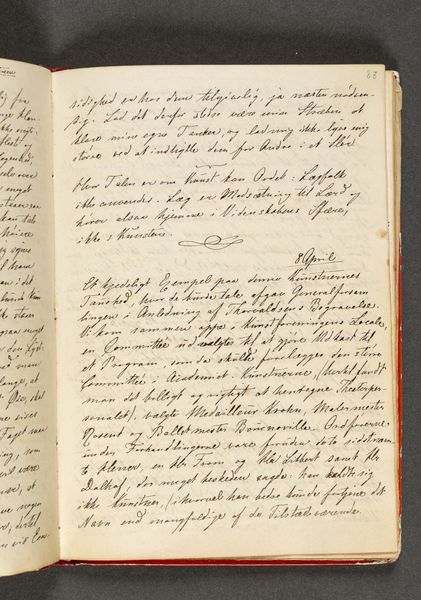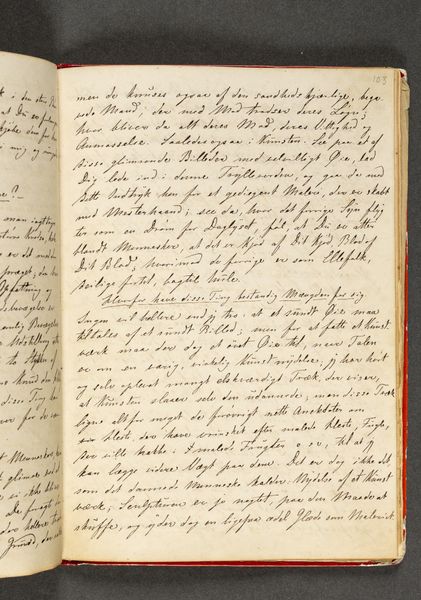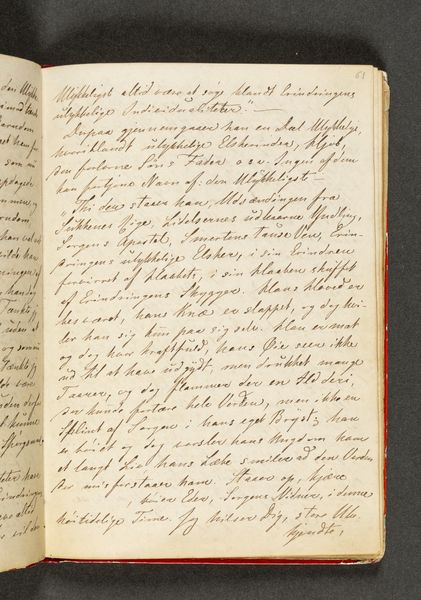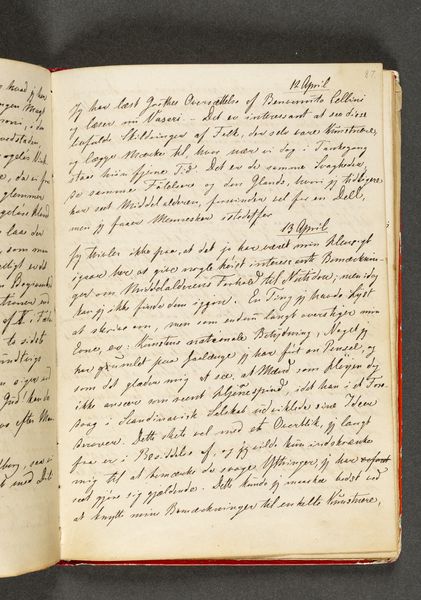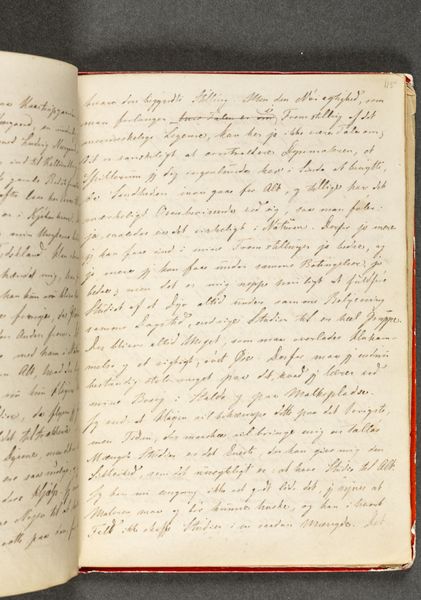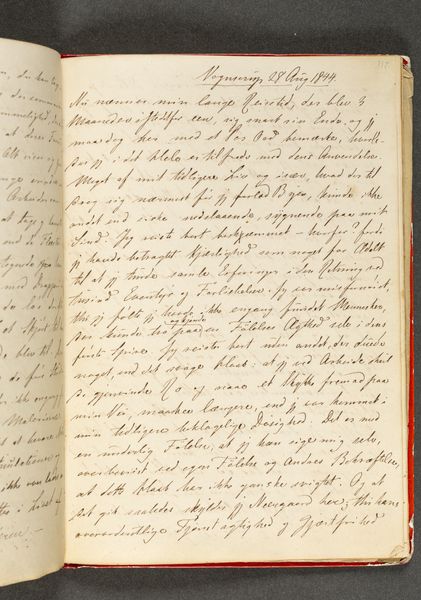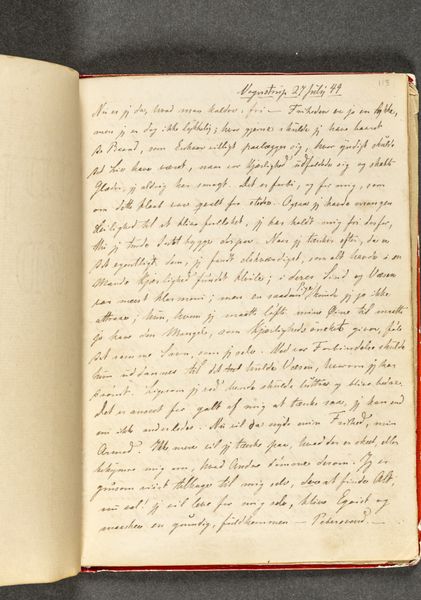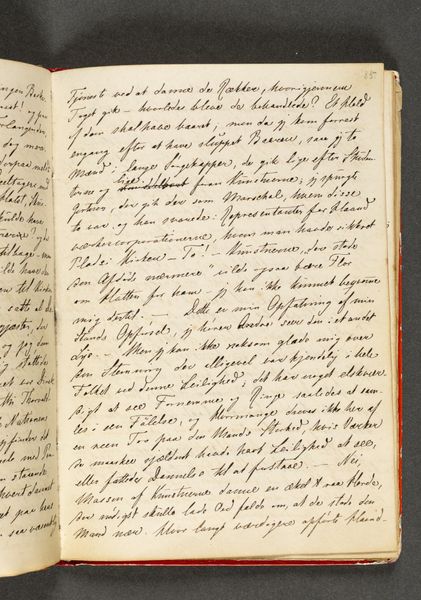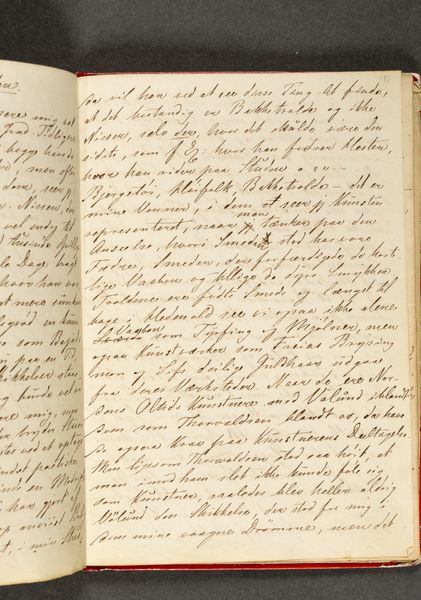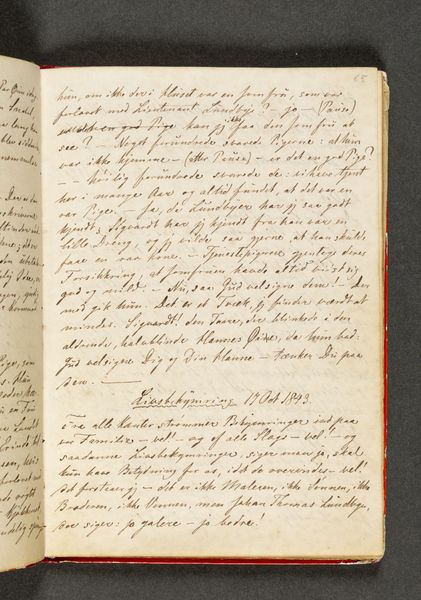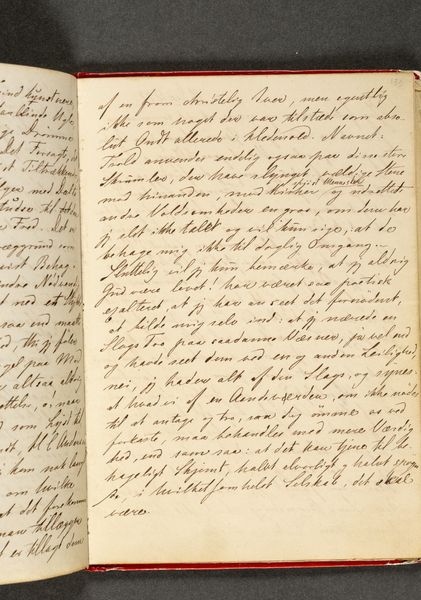
drawing, paper
#
drawing
#
narrative-art
#
paper
#
romanticism
#
calligraphy
Dimensions: 192 mm (height) x 133 mm (width) (bladmaal)
Curator: This is "Diary. Page 99" by Johan Thomas Lundbye, made in 1844. It's a drawing on paper held at the SMK, the National Gallery of Denmark. Editor: My first impression? It feels intensely private, like sneaking a peek into someone's soul through their handwriting. All that script—it's beautiful but indecipherable to me! Curator: It's Romantic, no doubt about it. Lundbye was working in a period deeply engaged with national identity, artistic genius, and a highly individual approach to seeing the world. Diaries were a way to cultivate that individuality. Editor: Looking at the form itself—the open notebook, the flowing text—it reminds me of ancient texts, sacred scrolls preserving important cultural knowledge or personal revelations. Lundbye elevates the everyday, maybe? Curator: He definitely places personal experience as a touchstone for grander ideas. There's so much tied into this practice: the rise of literacy among the middle class, new ideas about children’s education, and travel and firsthand observation as being foundational for creative work. Editor: And consider handwriting as itself an iconographic language. The curves and slants must convey particular nuances to someone of that time – even if we, as modern viewers, can't literally read them, we feel their emotion. Curator: Absolutely. Calligraphy, the act of writing itself, gains significant cultural weight, acting almost like a visual fingerprint of the individual's emotional state or character. We also see the very intimate connections to literary and philosophical spheres. Lundbye's diary references Goethe. Editor: That reference makes sense. It points to the writer’s deep engagement with feelings and ideas, linking the immediate present moment to timeless concepts and influences. It serves as a self-portrait rendered in prose. Curator: These works help us to view Romanticism as a broad cultural movement where a highly personalized lens filters every observation, experience, and act of creation. The intimate details contained here open up into this big conversation about national, political, and cultural aspirations. Editor: Yes. When reading this journal page as an artwork we must consider not only what he's conveying in text, but also how his specific mode of inscription creates resonances within the text. We can read his feelings, without even comprehending the explicit content.
Comments
No comments
Be the first to comment and join the conversation on the ultimate creative platform.
